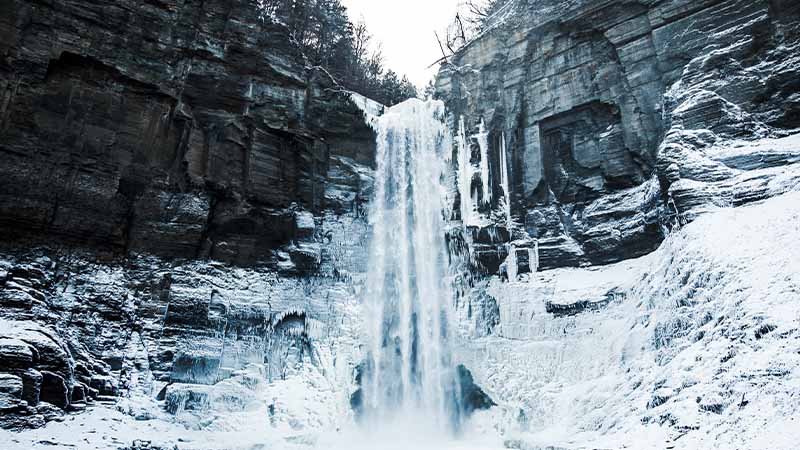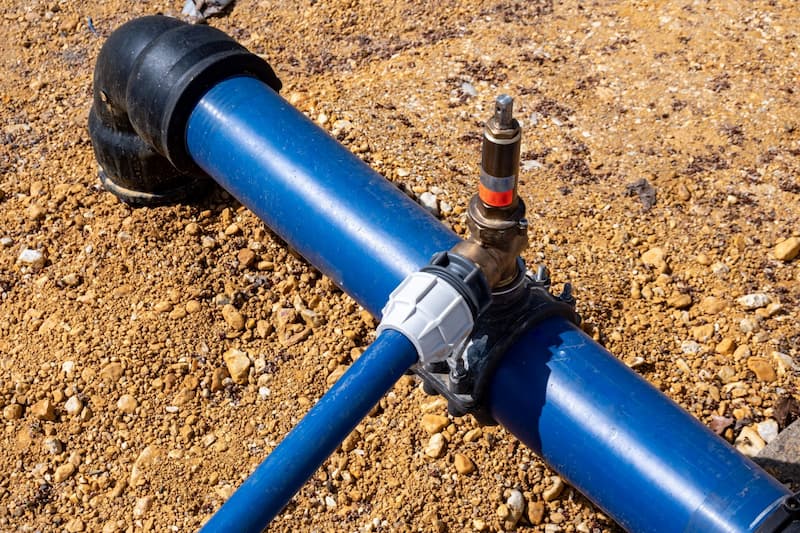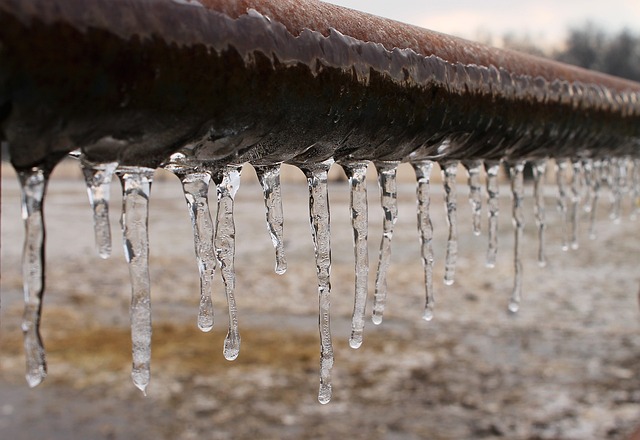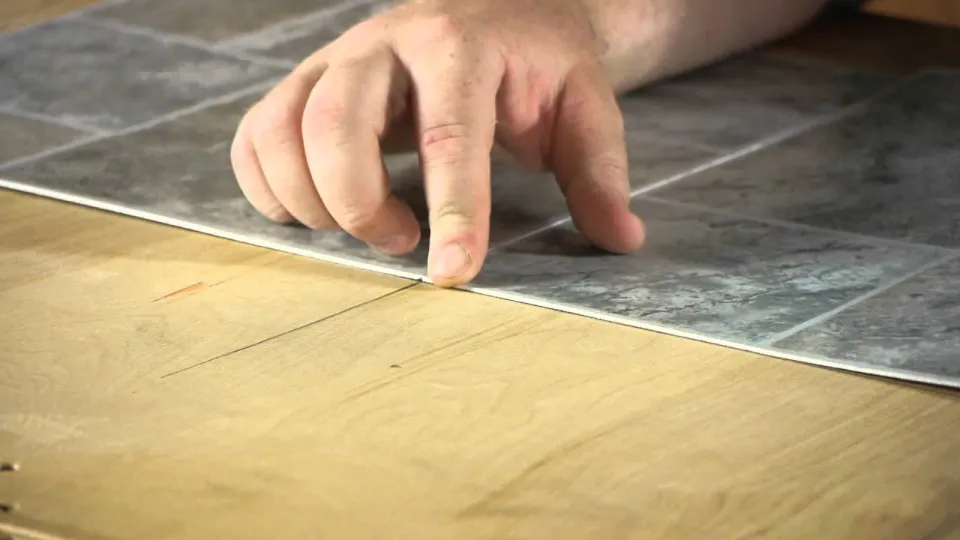It is nearly impossible to predict with any degree of accuracy how long it will take for pipes to unfreeze. Due to the possibility of pipes bursting, it is best to defrost the pipes manually using heat as opposed to waiting.
It’s crucial to set up safeguards against the freeze, such as heating your home and allowing the faucets to drip (a slow trickle will do) when the temperature drops. If you live in a region where pipes freeze every winter, investing in proper line insulation may be the best long-term solution.
Your frozen pipes could stay frozen for days, weeks, or even months if you don’t take steps to thaw them out. There is a chance that your interior pipes will freeze as long as the outside temperature is below freezing. Additionally, your pipes’ risk of burst water pipes increases the longer they are frozen. Frozen pipes should be thawed as soon as possible using a hairdryer, heater, or other device.
Keep in mind that frozen pipes frequently cause water flow to stop. You need defrosted pipes whether you want to take a shower, wash the dishes, or just get a glass of water.
How Long Does It Take for Pipes to Unfreeze?
Fortunately, most DIY methods for unfreezing pipes gets the water flowing again in 30-40 minutes.
The urge to wait for the pipes to defrost on their own might come to mind. But keep in mind:
Depending on the weather, the process can take days. It usually takes a temperature drop of 20 degrees Fahrenheit for pipes to begin to freeze. The pressure inside the pipes by that point can reach 40,000 PSI as the water in the pipes has solidified.
However, that period may change based on the location and length of time the pipes have been frozen.
How Long Does It Take for Underground Pipes to Thaw?
Frost, as you may already be aware, penetrates soils and will delay the thawing of pipes.
That’s because the surrounding soil must first thaw, which could take several days or longer, before the buried pipes have a chance to defrost.
And to make matters worse, unless you actively combat the freeze, which is what we advise doing in any case, there isn’t much you can do to hasten the thawing.

How to Know If Your Pipes Froze?
There will be little to no water flowing from faucets and showerheads if a water supply pipe has frozen. Frozen pipes can also make it difficult or impossible for your toilet tank to refill after flushing. If several faucets are not working, there may be one or more frozen pipes in the main water supply. If only one plumbing fixture is affected, the frozen pipe is usually the one going to that faucet or toilet.
- Frozen pipes can be detected by reduced or nonexistent water flow from faucets and showerheads.
- Toilet water supply pipes can also freeze. It’s possible that the pipe leading to your tank is frozen if it fills slowly or not at all.
- A frozen drain pipe may be to blame for your toilet, sink, or shower not draining.
Your toilets, showers, sinks, and bathtubs won’t drain as quickly if a water drain pipe is frozen. They might not drain at all in some situations. An entire home’s worth of appliances could be impacted by frozen drain pipes.
How to Tell Where Pipes Are Frozen?
Finding frozen pipes involves figuring out what doesn’t work.
From a kitchen faucet that isn’t delivering water or a toilet that isn’t refilling, check the plumbing backwards.
- On pipes, look for condensation or a thin layer of frost.
- Use a small tool to tap pipes, then listen for a solid sound.
- To find extremely cold spots, feel the surfaces of the pipes.
Examine the plumbing in the crawlspaces and the pipes in the basement carefully. Check the water main entering the house, and don’t forget about the exterior faucets.
How to Unfreeze Frozen Water Pipes?
Act quickly if your water pipes have frozen. Your pipes’ likelihood of bursting increases with the amount of time they spend frozen. Take these actions to thaw your pipes to avoid damaging your home’s plumbing. Instead of waiting for the pipes to thaw, you’ll have much more success solving the issue.
Find the Location of the Ice Blockage
To get back to the source, trace the pipe from your appliance. Look for areas where water beads or frost have formed on the pipe’s exterior; this may be a sign of an ice blockage. Tap the pipe with a screwdriver or small wrench along its entire length. There is an ice blockage anywhere that sounds solid.
- To check for ice blockages, follow the water pipe from the faucet to its source.
- Frost and/or condensation on a pipe’s exterior may be a sign of an ice blockage nearby.
- Use a screwdriver or a wrench to tap the pipe. That region is free of ice if it makes a hollow sound. A blockage of ice is present there if it makes a solid sound.
- You can still take action to defrost the pipe even if it runs behind a wall and is hidden from view.
You can still attempt to defrost your pipe even if you are unable to follow it because it is concealed by a wall, a finished basement, or a crawlspace. Although focusing your efforts on a specific location is helpful, the next step also discusses how to defrost pipes that are concealed in walls.
Apply Heat
The ideal situation when thawing frozen pipes is to have an exposed pipe where you can locate an ice blockage. In this situation, aim a hairdryer, heat lamp, or heat gun at the blockage of ice. You could also plug the pipe in and wrap it in heat tape. In 30 to 45 minutes, you should be able to use one of these methods to thaw the ice inside the pipe. After that, you can start using your appliances.
Thawing Exposed Pipes
- Use a heat lamp, hair dryer, or heat gun to direct hot air at the frozen section of the pipe.
- Wrap heating cable around frozen pipes to thaw them and prevent them from freezing over again.
- These procedures take 30 to 45 minutes to defrost frozen exposed pipes.
Thawing Pipes in Walls
- To raise the temperature in your home, raise the thermostat.
- In a space where the pipes are frozen and it is enclosed, use a space heater.
- To let warm air circulate near the plumbing, open floor-level cabinets.
- To thaw pipes in these areas, think about heating your basement or attic with a space heater.
- Using these techniques to thaw pipes could take several hours.
It will be much more difficult to pinpoint exactly where the ice has formed if your frozen pipe is concealed behind walls. In such situations, opening the cabinet doors below a frozen sink, setting up a space heater in the space, and raising the thermostat will help defrost a frozen pipe the best way possible. A room’s temperature can be raised to aid in the thawing of frozen pipes over the following few hours. Consider contacting a licensed plumber if this doesn’t work.
Keep Your Pipes from Refreezing
There is a chance that your pipes will freeze again if they have already done so this winter. Using self-regulating heat cables that are covered in insulating tape, insulate exposed pipes to stop this from happening. These cables have internal thermostats that activate if the temperature drops too low. This will prevent ice from building up in your pipes.
- Wrap this insulating tape around any exposed pipes and self-regulating heat cable.
- To stop in-wall pipes from freezing, raise the temperature in your house.
- Use space heaters to keep certain rooms warm and avoid frozen pipes.
- Space heaters are particularly helpful in bathrooms, attics, and basements where pipes frequently freeze.
Increasing the temperature is one of the best ways to prevent ice blockages if your in-wall pipes are prone to freezing. Place space heaters in rooms where pipes frequently freeze, or raise the thermostat in your home. Just make sure to keep a space heater at least 3 feet away from anything flammable if you’re using one to avoid starting a fire by accident.
- Use a hair dryer, heat gun, or heat tape to apply heat to the frozen section of the pipe for 30 to 45 minutes.
- Increase the room’s temperature by turning up the thermostat or using a space heater if the frozen pipe is concealed inside an exterior wall or otherwise inaccessible.
Your pipes will thaw out if you use heat sources to raise the temperature as close as possible to the frozen section of the pipe. Consult a qualified plumber if the issue persists and you are unable to get your pipes functioning once more.

How to Keep Water Pipes from Freezing?
One method to prevent pipes from freezing is to wrap them in an electrical heating cable (make sure it is sufficiently insulated), then plug the cable in.
This keeps the pipe’s temperature above the freezing point, preventing a freeze.
Leaving the faucets to drip gradually is another simple method.
With that, the pressure is gradually released, lowering the risk of freezing.
There are other techniques as well, such as continuously heating the area and covering the pipeline with blankets in the winter.
Long-term, it’s best to insulate the lines, especially if you live somewhere where sub-zero temperatures are frequent.
Will Frozen Water Pipes Thaw on Their Own?
When temperatures stay above freezing for a sustained period of time, frozen water pipes will thaw. It might take hours or even days for this natural thawing to occur. If a frozen pipe is underground, it might not thaw even when air temperatures rise above freezing.
- Once temperatures are above freezing for a sustained period of time, frozen pipes will naturally thaw.
- Pipes may not thaw completely until several hours or even days have passed with temperatures above freezing.
- Defrost your water pipes right away if they have frozen.
Waiting for frozen pipes to thaw naturally is not advised. A burst pipe can cause water damage, flooding, and costly plumbing repairs, so waiting for pipes to thaw increases the risk of this happening.
What to Do If Your Water Pipes Burst?
There are various ways to handle various locations, but all burst pipes require prompt repair and cleanup of plumbing leaks.
Depending on where the pipe froze, these tips can make a hard job a little easier:
Burst Kitchen Pipes – Small leaks under sinks can be repaired with fiberglass pipe tape, plumber’s putty, or a hose clamp. Large kitchen pipe bursts respond best to a sleeve clamp kit.
Burst Pipes in the Bathroom– Usually found inside walls behind cabinets and fixtures, frozen burst pipes in bathrooms. Call restoration experts who specialize in fixing burst pipes after turning off the water supply.
Frozen Burst Basement Pipes: First, turn off the electricity and water in your house before addressing basement burst pipe repairs. If the water in your basement is deeper than an inch, don’t attempt to clean it up. You might want to hire experts to handle this task as well.
Burst Pipes in the Garage – Make a temporary repair with duct tape or electrical tape if frozen copper pipes in the garage start to leak. Epoxy putty and fiberglass tape are examples of long-lasting repairs.
Call a Water Damage Pro – Often, hiring experts in water damage is simpler and quicker. They take care of everything, including water cleanup and property restoration after frozen burst pipes.
How to Prevent Frozen Pipes?
Most people at this time of year are concerned about how to handle frozen water pipes, particularly in Chicago. Although you can’t always prevent it from happening, following these advice will lessen the likelihood of pipes in your house or place of business freezing and burst.
- Turn up the thermostat, and circulate warm air through every room by leaving interior doors open.
- When temperatures plunge, let faucets dripto prevent hot and cold water pipes from freezing.
- Move warm airthrough the kitchen and bathrooms by running fans and directing them toward open cabinet doors.
- Keep cold air from seeping into walls by upgrading insulationand resealing window and door frames.
- Disconnect and drain hoses, insulate outdoor pipes, and cover faucets before the first freeze hits.
- live in an apartment in Chicago? Make sure your landlord keeps the temperature set to 68 degrees during the day and 66 degrees overnight; You can report them to 311 if they don’t comply, and the landlord could face fines of up to $1,000 per day.
FAQs
Can I Unfreeze Pipes by Pouring Hot Water Down the Drain?
Yes, give very hot water some salt. After a brief pause, pour a cup of the mixture down the drain and carry on. The process might need to be repeated.
Which Faucets Should I Let Drip to Keep Pipes from Freezing?
Allow all of your home’s faucets to drip during a hard freeze to be on the safe side. If this isn’t possible, turn on faucets connected to pipes located in exterior walls
Can I Use a Small Blow Torch to Unfreeze Pipes?
No, never expose frozen pipes to any kind of open flame. Intense heat can harm pipes and fittings, and an open flame poses a significant fire risk.



